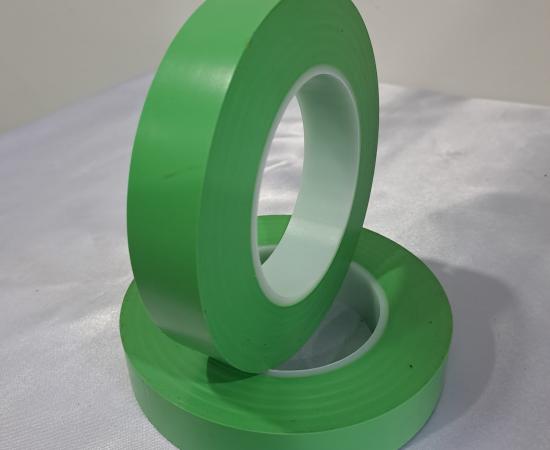Features and Benefits
1. Precision Masking:
Fine line masking tape is designed for precise applications, allowing for sharp, clean lines during painting and detailing work.
2. Conformability:
This tape easily conforms to curves, contours, and irregular surfaces, ensuring accurate coverage without lifting or wrinkling.
3. Residue-Free Removal:
Engineered to remove cleanly, fine line masking tape leaves no adhesive residue, even after extended periods of use.
4. High Temperature Resistance:
With the ability to withstand high temperatures, this tape is ideal for automotive and industrial applications, particularly in environments where heat is involved.
5. UV and Moisture Resistant:
The tape is resistant to UV light and moisture, making it suitable for both indoor and outdoor applications without degradation.
6. Flexible and Durable:
Its flexible backing provides durability while maintaining the ability to be stretched and manipulated as needed for complex patterns.
7. Multiple Surface Compatibility:
Fine line masking tape adheres well to a variety of surfaces, including metal, plastic, rubber, and painted surfaces, making it versatile for different projects.
Applications
1. Automotive Detailing and Painting:
Fine line masking tape is widely used in the automotive industry for custom paint jobs, detailing, and two-tone finishes. It ensures clean lines and precise edges.
2. Graphics and Signage:
Ideal for creating sharp, intricate designs on signage, vehicles, and other promotional materials. It helps in masking off areas for clean graphic applications.
3. Marine Applications:
Used in boat painting and detailing, fine line masking tape ensures precision in marine environments, withstanding exposure to water and UV light.
4. Industrial Coating:
In industrial settings, fine line masking tape is used for coating and finishing applications, providing accurate masking for high-performance finishes.
5. Aerospace Industry:
Fine line masking tape is utilized in aerospace manufacturing for critical masking tasks, ensuring clean edges during painting and coating processes.
6. Home Improvement and DIY Projects:
Perfect for detailed painting work, whether you're creating stripes on walls, designs on furniture, or any other intricate patterns.
7. Electronics and Circuit Boards:
Used for masking during the production of electronics and circuit boards, ensuring that sensitive areas are protected during soldering and coating.
Best Practices for Use
1. Surface Preparation:
Ensure the surface is clean, dry, and free from dust, grease, and contaminants. A properly prepared surface enhances adhesion and results in cleaner lines.
2. Apply with Care:
When applying the tape, avoid stretching it too much as this can cause lifting or warping. Instead, press it down gently and evenly along the surface.
3. Overlap Slightly:
For complex patterns or when masking larger areas, slightly overlap the edges of the tape to ensure full coverage and prevent paint from seeping through.
4. Use a Roller or Squeegee:
To ensure the tape is fully adhered to the surface, especially around curves and contours, use a roller or squeegee to press it down firmly.
5. Remove at an Angle:
After painting, remove the tape slowly and at a sharp angle (about 45 degrees) while the paint is still tacky to avoid tearing or lifting the paint.
Tips for Specific Applications
1. Automotive Detailing:
When masking for custom paint jobs, make sure to use fine line tape with high-temperature resistance, especially for areas near the engine or exhaust. For multi-color paint jobs, apply tape between each layer of paint for the cleanest results.
2. Industrial Coating:
In industrial settings, ensure that the tape is compatible with the coating materials being used. For best results, remove the tape after the first stage of curing, when the coating is dry to the touch but not fully hardened.
3. Home Improvement:
For painting stripes or geometric patterns on walls, use a level or laser guide to ensure straight lines before applying the tape. After painting, remove the tape before the paint fully dries to prevent peeling.
4. Marine and Aerospace:
In marine or aerospace environments, ensure that the tape's temperature and UV resistance align with the conditions it will face. For best adhesion, apply the tape in a controlled environment where humidity and temperature are stable.
5. Electronics Manufacturing:
When using fine line masking tape in electronics production, make sure the tape is ESD (Electrostatic Discharge) safe, especially in sensitive environments. Use multiple layers of tape to protect delicate areas.
call us: +91 9822619307 Follow us:

